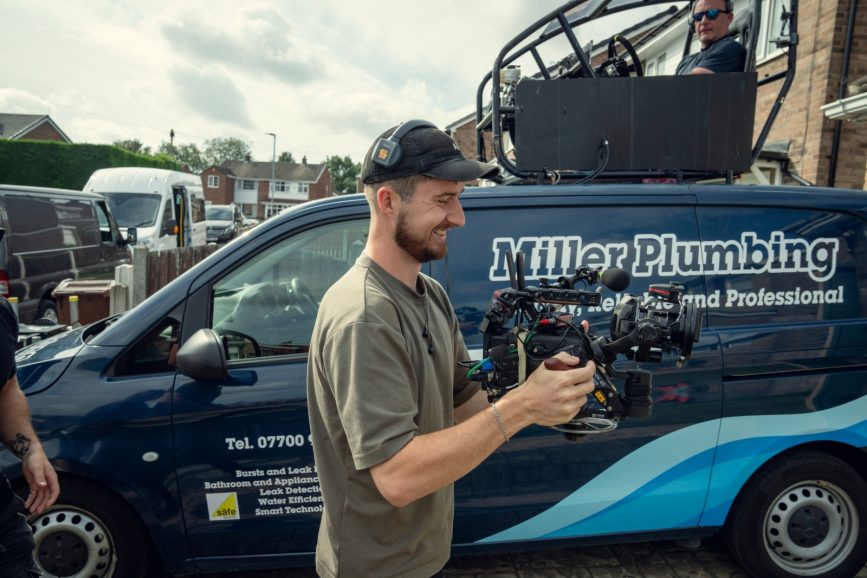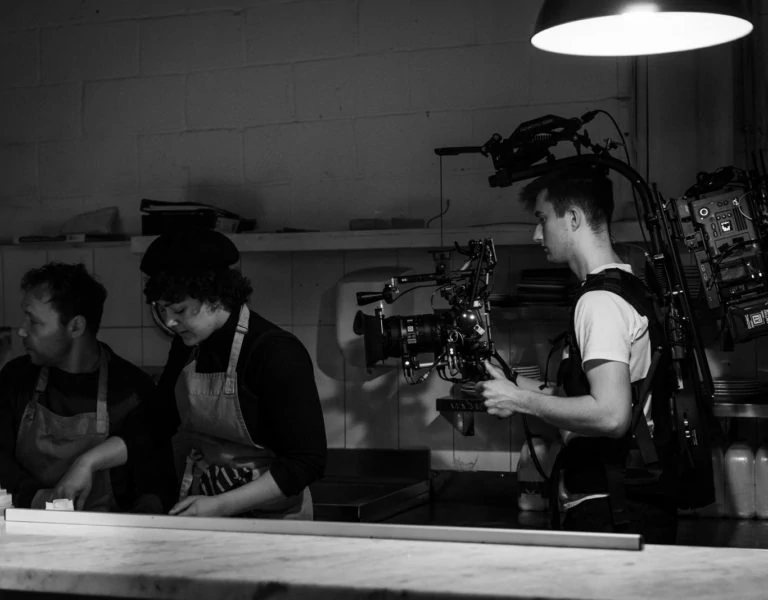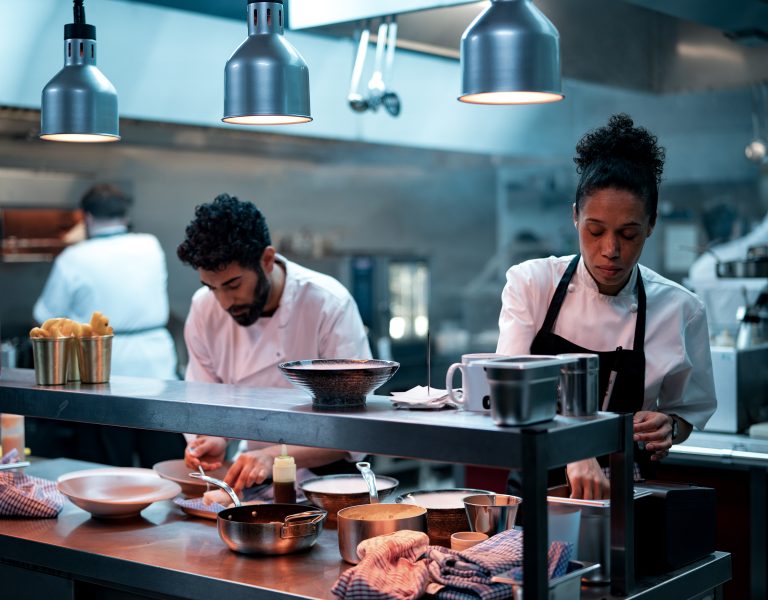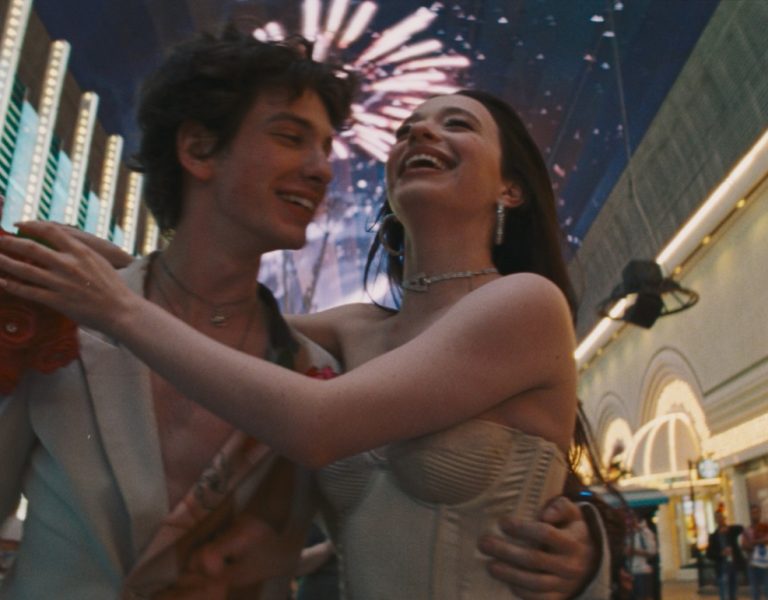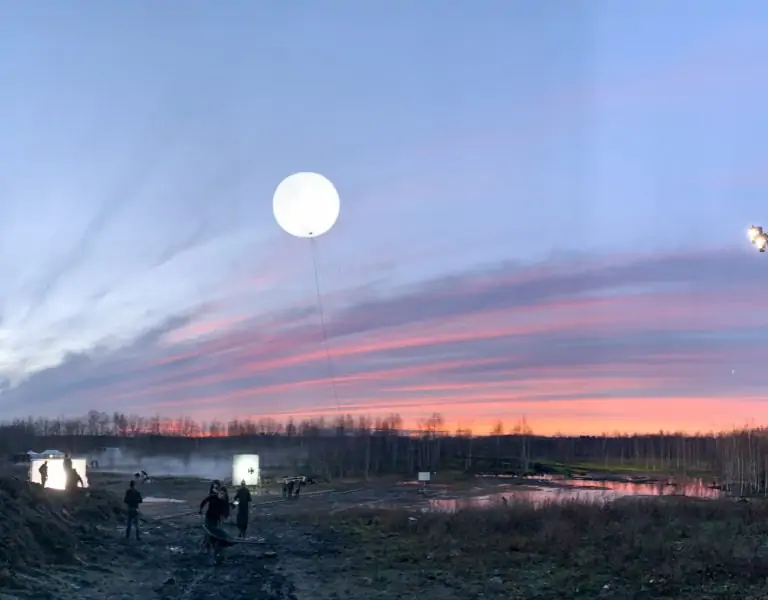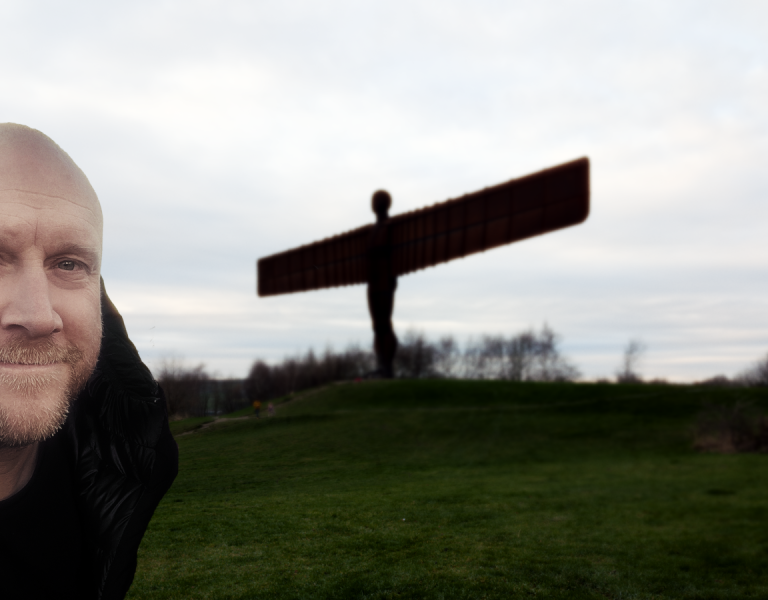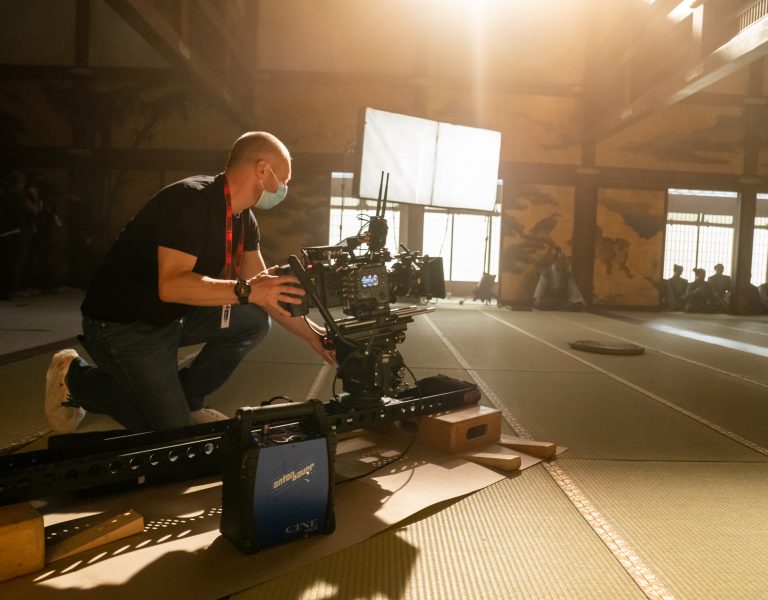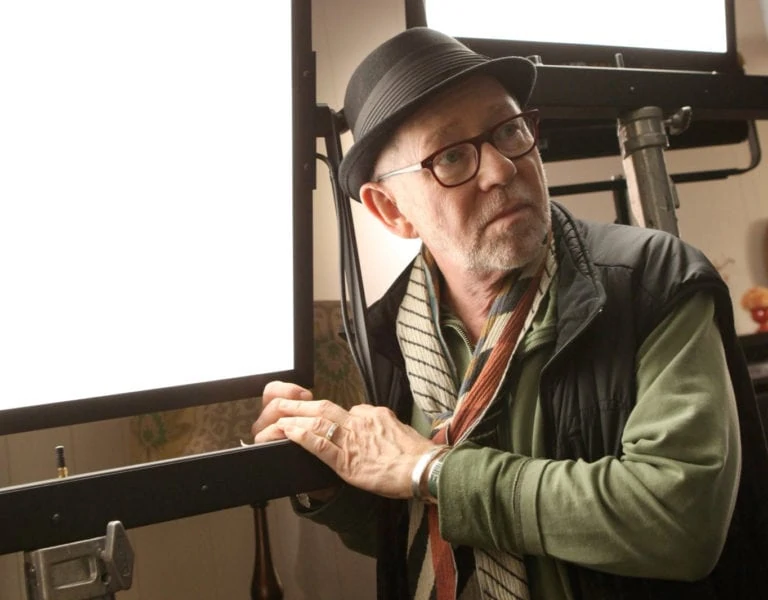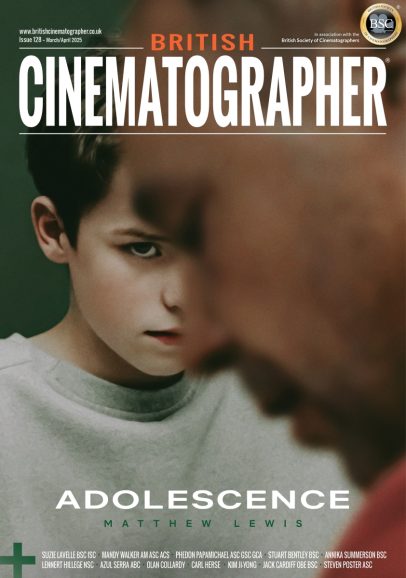SEAMLESS STORYTELLING
Precise planning, technical expertise and skilful camera operating and performance allowed cast and crew to be completely in synch for unflinching one-shot series Adolescence. The raw crime drama examining the harsh reality and devastating impact of knife crime immerses the viewer and sparks debate over the root cause of teen violence.
The tension created when adopting the one-shot technique is one of its strengths, according to cinematographer Matthew Lewis. The increasing intensity and immersive power it brings to a production is perfectly demonstrated in the latest ambitious series he lensed, Adolescence, with each of the Netflix production’s four episodes filmed in a single, continuous take.
Exploring the devastating impact on a family when 13-year-old Jamie Miller (Owen Cooper in his first on-screen role) is arrested and charged with the murder of a teenage girl who attends his school, the crime drama is the brainchild of actor and producer Stephen Graham.
Graham – who co-wrote the series with Jack Thorne and plays Jamie’s father and ‘appropriate adult’, Eddie Miller – was inspired to bring the story to the screen by an article about a young boy stabbing a young girl. “It made me feel cold and genuinely shook me,” he says. “A few months later, I saw another story on the news about a similar stabbing and I thought what kind of society are we living in where this has happened again?”
The incidents had a profound impact on Graham. He knew the topic was important to highlight, sparking the foundations of Adolescence. Having explained an outline of the episodes and desire for each one to be filmed in one continuous take to writer-director Philip Barantini, with whom Graham made another one-shot wonder, Boiling Point (also shot by Lewis), Barantini was instantly captivated by the concept.
Co-produced by Warp Films and Brad Pitt’s Plan B Entertainment, the all–star cast includes Ashley Walters as Detective Inspector Bascombe, and Erin Doherty as Briony Ariston, the clinical psychologist assigned to Jamie’s case. From the explosive start of the first episode, it’s apparent how high the one-take technique bar is set as the viewer joins police in a convoy heading to a house, they smash down doors, storm into the home and sweep from room to room until they find the teenage boy suspected of murder. We then follow Jamie being loaded into the van, driven to the police station and questioned, all captured seamlessly.
The variety of performances, settings and tones a one-shot approach is capable of capturing are on display throughout the series, including a more grounded, but no less tense, episode three which mainly unfolds in a single room during a revealing conversation between Jamie and clinical psychologist Briony or episode two’s on-foot chase from the school that transitions into a soaring shot over the town before swooping back down to land.
“The one shot was a format we knew well, along with the benefits and limitations, the benefit being the underlying and unbreaking, nervousness and tension the audience feels because there is no release,” says Lewis.
“The script was an interesting mixture with elements of a thriller as well as a lot of discussion and psychological aspects which I thought could be intriguing to explore through the one-shot. So our approach was evolving by finding interesting ways to tell the story. For example, I was concerned about episode three at first because it focuses on Jamie and Briony sat at a table. I wondered what we would do with the camera, but finding that out was a fascinating process and it’s become my favourite episode.”

Chemistry between cast and crew
Barantini, Graham and Thorne always knew the series should be set in the north of England. “We also wanted it to feel very real, visceral and authentic,” says Barantini, who grew up watching ‘80s films and wanted to incorporate some of that “cinematic feeling with lots of grain, contrast and colour”.
There was already a great deal of trust between Barantini, Lewis, and Graham from their previous work [Graham also starred in Boiling Point), giving them insight into the chemistry between cast and crew when making a one-shot. “From Boiling Point, we had a preconceived idea of how we might shoot this series, but when Stephen and Jack sent me the script for Adolescence I discovered we were in and out of cars, running down stairs, jumping through windows,” says Barantini.
“Matt and I thought this could be really cool, but how are we going to shoot it? At the same time we didn’t want it to be about big explosions and camera moves like big action movies. We wanted the camera moves and cinematography to be almost subconscious, natural and organic. We wanted to tell these stories in real time, so it was about how to do that without it becoming a big spectacle?”
When Barantini and James Cummings wrote the script for Boiling Point they already had the restaurant location in mind as Barantini had worked in the kitchen and knew it well. “It wasn’t easy, but we knew where the camera was going to be while we were writing. But Jack and Stephen had written locations from their mind, so it was important to time everything precisely when we were looking for locations,” says Barantini.
“We knew there were housing estates in the area of the studio where we built the police station but we needed to find a house that was the precise distance away. So Matt and I drove from the house with some crew including 1st AD Sarah, who did her best impression of the cast, reading the script while we timed it.
“When we drive from the house to the police station in episode one, you never see outside the van, so we’re actually just driving into the studio in Pontefract. We also built an area outside the studio the van could drive into and then we travel through the shutters, and we’re in the police station.”
Like the police station, the secure training centre in episode three was a set build. Close collaboration with production designer Adam Tomlinson was essential as spaces often needed to be transformed such as a warehouse they turned into hardware store Wainwrights for the final episode examining the impact of Jamie’s crime on his family.
Studio 005 at Production Park in Wakefield was taken over for six months to build an intricate set – built by production designer Adam Tomlinson and his team – with two detailed interior settings and an outdoor extension, allowing for seamless scene transitions and location changes.
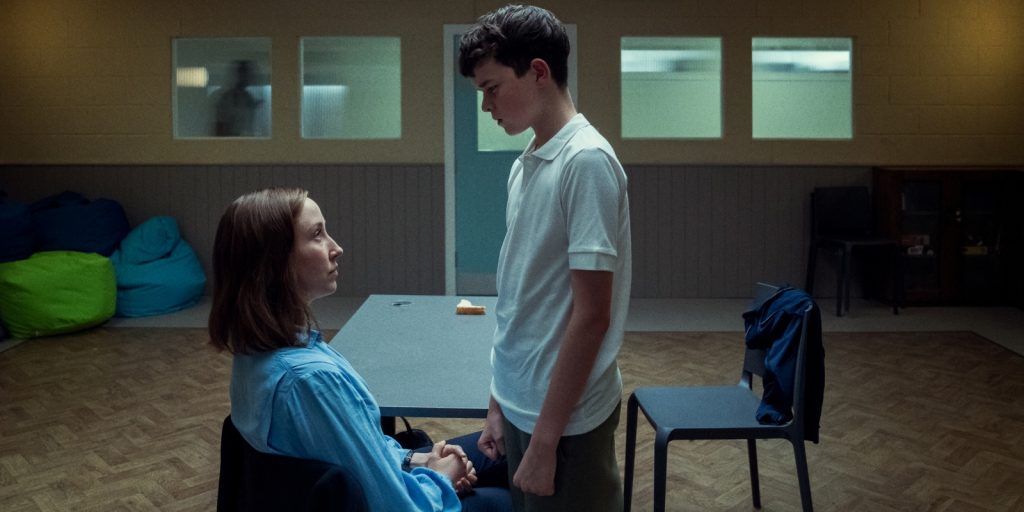
Evolving the approach
Co-writer Thorne believes the power of the one-shot approach lies in the rawness it creates. “And from a writing perspective, it forces you into telling incomplete stories, which for this show is vital. We wanted to end the series in a way that means the audience is not sure what to think. That we hadn’t presented them with easy answers,” he says.
“Sometimes when you make a show where you can cut anywhere, do anything, see anything and understand anything, you lose that question because you’re so busy presenting the answer. If you understand exactly where Jamie is in the criminal justice system or exactly what Eddie’s feeling at any time, you don’t have the question rattling around in your head. And the question is really important and difficult in this series, which is why do boys use violence? Answering that question requires a lot of answers, rather than one, which the one-shot allows for.”
One element Lewis wanted to evolve from his previous one-shot experience on Boiling Point was the handheld aspect which he felt could limit the production and make it difficult for the audience to forget someone was operating the camera. “It creates a separation between you and the characters, especially if you’re moving down a corridor and you can feel the operator’s footsteps,” he adds. “So coming into this series my prime concern was trying to make it smooth by getting it on a gimbal.”
Selecting the most appropriate tools for such an ambitious series in which the camera almost becomes a character was more crucial than ever. Boiling Point was all shot in one location using a Sony Venice in Rialto mode on an Easyrig, detaching the lens from the body to distribute the weight. “This time we needed an even more nimble system as we would be moving between multiple locations and shooting for 45 minutes to an hour at a time. So we tested numerous options; some had image quality limitations and others were cumbersome,” he explains. “My key grip, Patrick Gillespie, then suggested trying the DJI Ronin 4D which I’d heard of but not used. It was instantly clear that it was ridiculously well suited to what we needed.”
At the budgetary stage, Lewis outlined to Warp where resources would be needed to make the ambitious shoot a success, where it could be possible to save money and advised on the schedule.
It was apparent it would not be possible for Lewis to shoot all episodes alone, as he had done on Boiling Point. Lee Brown came on board to operate alongside him, forming a dynamic duo capable of nimbly capturing everything from intimate performances in interrogation rooms through to fast-paced chases by foot and vehicle.
Barantini agrees the Ronin 4D was integral in allowing them to realise their vision. “It’s so nimble as it’s got a built-in gimbal so we could shoot gimbal, press a button, and go completely handheld, all in one move, which hadn’t been possible before and changed the game for us. We could choreograph that Lee would take over from Matt at a certain point, run down the road while Matt jumped in a van and drove to the next point where they would pass it back again.”
Understanding limitations in areas such as dynamic range and rolling shutter when moving at speed and adjusting processes accordingly was an important part of the learning curve. While image quality undoubtedly plays a role, it was also about examining how the story could be told effectively through camera movement and in a way that would not be jarring for the audience.
“The 4D is a gimbal with a Z axis – a tiny system with two handles either side so you can hand it between operators, which changed the entire process,” enthuses Lewis.
As the gimbal has a weight limit of just over 1kg, Lewis tested lenses that fell within that, some photographic lenses and others with built-in focus so a motor was not required. A member of the Cooke team then mentioned the recently-released SP3 lenses. “I love Cooke lenses and when we put the SP3 on I knew that was the lens. They look stunning, especially when shooting skin tones. They are like the S4s but with a little more character around the edges and are super light at 520g, with room to spare, which I needed. They made the 4D two-fold better – it became a cinema rig.”
Lewis used a focus motor on the lens and he did not want to iris pull. “Every time we went in and out of a bright space, I didn’t want to go to T11; I wanted consistency in the image and not for it to feel like a different show suddenly when we went outside. So we left the iris at 2.8 for everything to give my focus puller Sean Beasley a fighting chance,” says Lewis. “And we found a really light variable ND that was a Tilta Mirage with a wireless motor we could put on which came just within the weight threshold if we stripped it right back.”
Focus puller Beasley and loader Adam Farquharson, who monitored the variable ND, moved with Lewis, controlling levels of exposure as he travelled in and out of buildings, keeping them within a pre-tested threshold the camera performed best at. “You lost information quite quickly as things got darker, so we moved everything a couple of stops higher than normal, and we had a stop down LUT which did really well at keeping highlights in check,” says Lewis. “As DJI is also a drone company, they know how to look after highlights in those scenarios, so we found highlights and a lot of cloud information could come back.”
While the lenses and variable ND weighed in at 885g, Lewis needed to exceed that weight a little on the fourth episode, building a custom mount to flip the variable ND backwards to slightly polarize the image, making it possible to see through the van window.
Custom-built gear included a magnet quick–release mount and camera plate on an electric slider used for the van sequences. Shooting the high-flying end to episode two also required careful planning and specific kit to follow the action from a high-speed on foot chase before the camera is attached to a drone and soars into the sky, capturing a birds-eye perspective of the town and then descends to focus on Eddie placing flowers in a car park. “For that we worked with a Shot Dock which is a ball-shaped connector which could be used at any angle. You could release tension on a spring so it would grip around the head of a metal spigot. While that kit existed, the mount connecting it to the drone had to be custom made by The Helicopter Girls, our drone team,” says Lewis.
Detailed testing with The Helicopter Girls was required to create a rig that would ensure the drone was balanced. Lewis visited their offices in Hampshire with the camera to work out how to make it fly and look at how far the camera could travel with line of sight on the Master Wheels before losing signal. “The Helicopter Girls were fantastic and so game for making it work,” he says. “It was such a ridiculous task, especially as it was at the end of a 45-minute one-shot, and we needed to connect to a drone, fly away and then land it.”
The shot was created by two grips lifting the drone onto the camera while the operator disengaged and then the pilot fired up the motors and launched. “In order to achieve the landing and hand off we had to mount up in a tracking vehicle with the pilot, operator and master wheels in the back and me and the driver up front,” says focus puller Beasley. “We followed behind the drone which was caught at the other end by more grips before the DP took control of the camera by hand to finish on the close-up of Stephen.”
Barantini and Graham also single out the sequence as one of the most complex but impressive. “Netflix executive Toby Bentley felt that at the end of the episode we needed to make contact with Eddie again as an emotional sting and to ground the show,” says Barantini.
“It was a great idea and ultimately that’s been at the centre of our concepts from the beginning when Philip made Boiling Point as a one-shot short,” adds Graham. “It’s all about the collaborative nature of the process – something I’m really proud of. The best idea in the room is what we go with. There’s no ego attached to it because we understand we are all a part of this.”
Focus puller Beasley also highlights an impressive shot moving through a window which was achieved by removing a pane of glass and the camera being handed to an operator waiting underneath the window. “While the camera operator chased the cast on foot, I chased close behind while pulling focus to maintain video signal range,” says focus puller Sean Beasley. “My loader Adam Farquharson was close behind controlling the exposure with a remote variable ND filter. We followed them all the way across the road to the alley where we had to hide behind a wall.”
Beasley pays tribute to the video department who “had to create video receiver networks which covered huge operational areas”. This meant running miles of cables and setting receivers up on rooftops and moving vehicles. “They used me as a mobile transmitter and had a switching desk to send reliable video signals for all the action cues.”
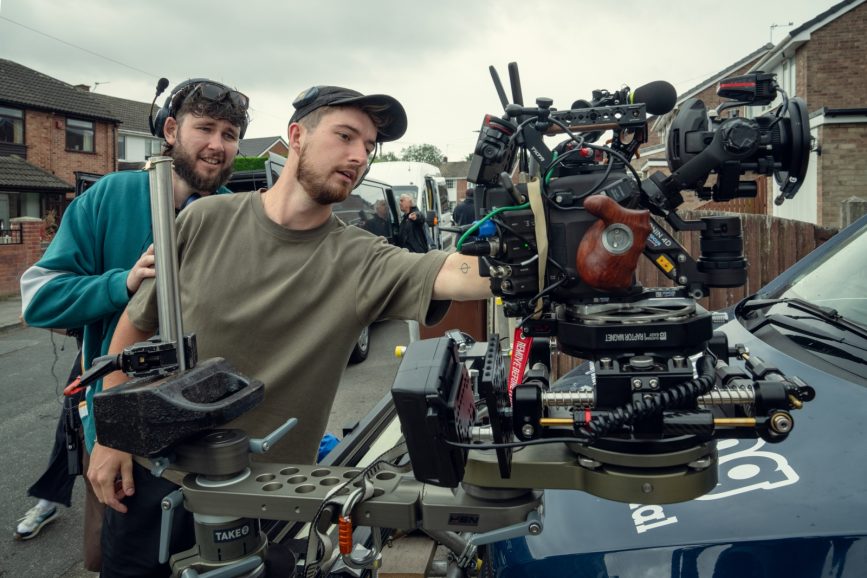
Smooth operators
Every aspect of the action needed to be meticulously mapped out to achieve multiple handoffs and allow the camera to travel, capturing the actors as they moved in and out of buildings and vehicles. Months of prep led to a week of rehearsals with director Barantini and the actors at the start of an episode’s block, with the group rehearsing each section individually and then together, walking each one through, scene by scene, until it became almost like muscle memory. A week of tech rehearsals followed and then a week of filming per episode, with some episodes achieving up to 16 takes but normally achieved in around 10 to 12 takes.
In preparation, Lewis used Shot Designer (from Hollywood Camera Work) to view each set, road and house from a top down perspective and animate all the positions and movements of cast and camera. He then worked out how to connect from one actor and part of the action to the next.
“You can’t shot list a one-shot just by typing out, ‘It’s a mid-shot and then you turn right’,” he highlights. “From a planning perspective the animations allowed us to show the whole team, from the cast through to our 1st AD, where the camera would move and put people in the right place.”
Precise planning and complete synchronisation was integral in the collaboration between Lewis and Brown too; a double act who it is hard to believe had not worked together before Adolescence as the results on screen demonstrate the highest level of creative and technical cohesion.
“I wanted someone with excellent intuition and a friend recommended Lee. I saw he had done a lot of Steadicam and worked on live music videos, moving between the members of the band, reading everything perfectly. The timing of his moves and understanding of movement was fantastic,” says Lewis. “Lee hit the ground running and I couldn’t fault his operating. He’s an emotional operator, in the sense that he reads the performances and reacts to the cast which is super rare.”
“Not only did we have to choreograph our movements to avoid one another, we also had to speak the same language with our operating, so the visual had a clear style,” adds Brown. “After each rehearsal or take, we would chat through the whole episode, giving each other notes and tweaking things with our DIT, Dan Wilkinson. Only through these conversations did we become so in tune with one another, allowing us to achieve such ambitious ideas throughout the series.”
One example in particular stands out as highlighting the physical achievement and synergy between the two. “35 minutes into the one shot, Lee was running to follow two of the actors along the side of the school before a tracking vehicle pulled up. He handed the camera to me on the tracking vehicle, and we went up the road, I hopped off and ran across the road for the stunt,” says Lewis.
“Lee was running and passing the most precious baton you could imagine and the way we could read each other so well and hand off the camera just before we reached a lamp post was incredible. The confidence he had in me that I would take it that late and that sense of judgment, spatial awareness and trust between us as operators was special.”
Brown reiterates that without the Ronin 4D, aspects of the shoot such as this would not have been possible. “I come from a Steadicam background, and if we’d used a Steadicam you wouldn’t have got it through a window, onto a moving crane, or flying over a town,” he says.
On top of the 4D, they used the Master Wheels to control the head of the camera when they were not able to hold it. “There are points where Matt had the camera in hand and I was operating the tilt and pan remotely from the wheels, mainly during transitions, on and off the crane, up and down stairs and while the camera was on the front of the Millers’ van.”
Brown also commends key grip Gillespie and his team for their ingenuity, using a magnetic quick release plate for the crane and van shots. “The camera assistants and video department were also incredible as they managed to keep transmission to the portable video village in episode one and four. They also ran video cable throughout the whole school so the AD team could queue the complex choreography for cast and crew.”
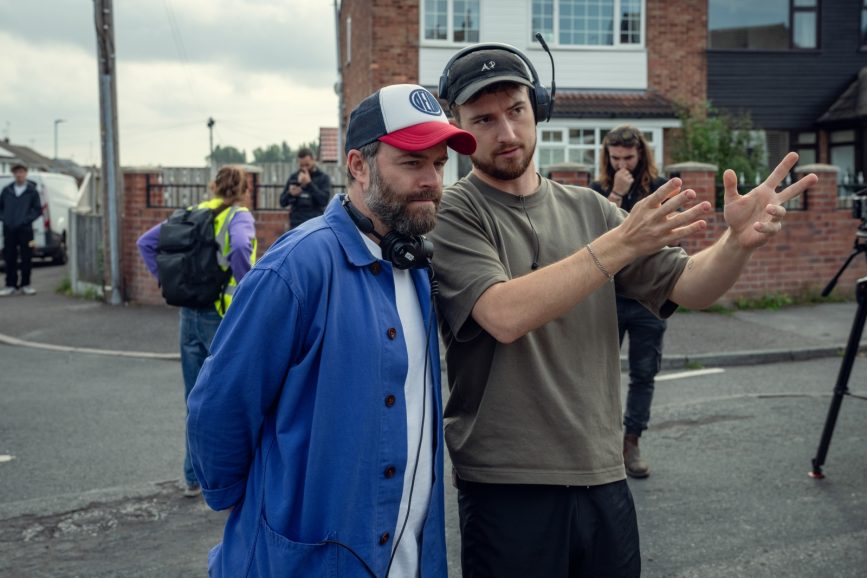
Perfecting transitions
Less was more when it came to Lewis and gaffer Max Hodgkinson’s lighting approach. “A lot of it was about utilising curtains and blinds in delicate ways and working with a lot of natural light and practicals where we could. If it was a really sunny day we closed the curtains another 10cm to control the light,” says Lewis. “In the school we always had ARRI M40s and some 6K lights outside the windows.”
Panalux Tektiles – which were controlled by DMX – were in the ceiling of the police station set. “And as we move around scenes, for instance, the end interview in the police station, Max used different modes to dim the overhead light and lift the backlight, so there was constantly a little shape on the face, which also gently rippled around the room.”
Lighting effects were utilised in the episode to match the emotion and increase the realism. “We wanted it to look like clouds were moving over the skylight in the interview room, so at times it got dark like heavy cloud was coming over, and then sun comes out, achieved through programming modes and timing it in with the script,” adds Lewis.
Elsewhere in that space a mixture of Creamsource Vortex8s, ARRI SkyPanels and some S360-Cs and S60-Cs were used alongside Velvet Kosmos as a hard source of light through the back to utilise being able to spot and flood the light mid take. Housing of classic office lighting was also used with Astera Titan Tubes fitted inside to add a level of control.
Colour grading a one-shot is more complex than a production featuring multiple cuts which allows each shot to be graded separately. “Adolescence was key framed all the way through and then layered with masks to deal with transitioning from darker to brighter spaces, bringing down the outside and then lifting it up because you’re also countering a variable ND, which is changing,” says Lewis.
Colourist Dan Moran from Harbor and Lewis extensively tested to determine what would be needed in the grade and how best to achieve the smooth transitions needed, using technical key framing to gently and seamlessly nudge the look to where it needed to be. Moran’s main goal was to “keep everything flowing as naturally as possible and hide any exposure changes” when moving inside from outside. If changes needed to be made later in an episode it impacted the whole process, meaning the grade needed to start again from the beginning of the episode.
“We started with a film stock – Kodak Vision3 500T 5219 stock – and brought the characteristics we wanted into the image,” adds Lewis. “We also had to anti vignette slightly because the 32mm lens had a noticeable vignette which I didn’t want across the image, so we created a separate mask to use all the way through the grade.”
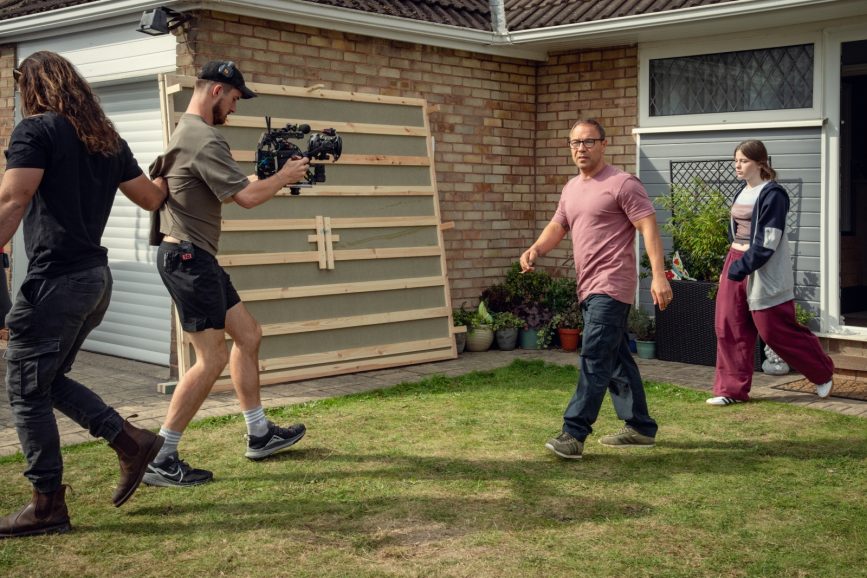
The purest relationship
As an actor performing in a one-shot production, Graham found the experience “wonderfully unique” because he got to “marry multiple disciplines: that live and spontaneous feeling you get from theatre and the excitement and adrenaline you get from performing on stage, but it’s also the technique, naturalism and realism of cinema and television. So the conversations have to be real conversations.”
On this particular creative journey, crew and actors became one. “We all set off and get prepared together and we gave a team talk at the beginning of every week. Everyone feels part of a team in this process,” adds Graham. “You’re acting and completely immersed in it but you know when you go through a door, the camera operator is going have to run and get through there before. You still want to make it look like you’re doing it naturally, but you’re conscious of them, so you’re really tuned in to the whole process of what we do together, and the collaborative nature of it. Each piece of the jigsaw and person is integral on set.”
Thorne agrees it was “the purest relationship between camera and actor” he has ever witnessed. “This was particularly true in episode three as where the camera was pointed and what the actor did with that camera was extraordinary, based on decisions Matt and Philip made,” he says. “It wasn’t about whether you can throw a camera out the window; although we did ask them to do that. In this show, we watched the cast listen or we watched them be put in difficult positions where they had to see their children be strip searched in front of them. The way the camera studied that and the elasticity between camera and actor was just beautiful.”
Barantini and Lewis both single out each other’s focus on the performance as being at the root of their effective partnership. Barantini praises Lewis for being a cinematographer “who is not precious about his beautiful shots and lighting. He’s empathetic, all about the story and performances, and incredibly instinctive”.
Lewis adds: “The shorthand between us is there and we both really get our heads into the story. I never try to do something too flashy – which might sound odd when talking about a one-shot production – but I always tried to do it in a way that respects and honours the performances.”
For the cinematographer, the best one-shots are based off “reacting to a human, where they are, where you are, when you forget the camera is there because it is reacting and responding to the performance and what the actor’s going through. It’s about being sensitive to their performance, being motivated by people. To achieve it in a way that makes it not feel like a gimmick is to make it entirely blend in so it feels fluid and smooth.”
